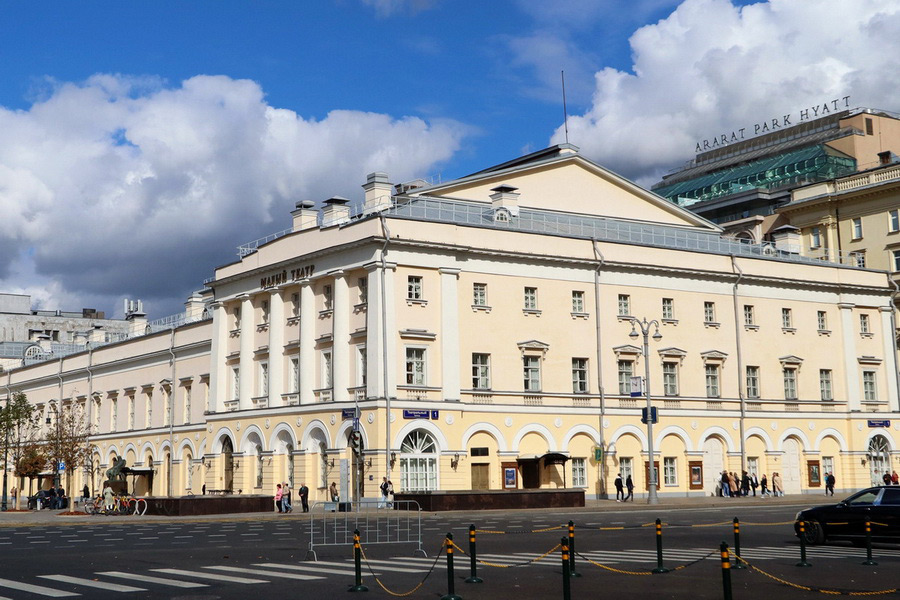
The State academic Maly Theatre was found in 1756 in accordance with the decree of Empress Elizaveta Petrovna. It was headed by Mikhail Heraskov, a literator. His group consisted of students of the gymnasium under Moscow University. The repertoire’s basis was grounded on the works of Russian classics – Griboedov, Gogol, Turgenev. Such Pushkin’s works as "Ruslan and Lyudmila", "Bahchisaray fountain", "Gypsies" got their stage personification when the genius poet was alive. This theatre is called “the second University”, thanks to its beneficial influence to Russian culture.
In 1824 the estate of the merchant Vargin became a performance stage for the theatre troupe. The theatre got its name due to the vicinity with the Bolshoy Theatre.
The particular place in the the Maly Theatre’s repertoire was given to the plays of Ostrovskii. He wrote 48 plays and all of them were performed on the stage of the theatre. Some plays the writer wrote specifically for the Maly Theatre and used to give the recommendation to actors personally. Today the theatre’s repertoire consists of Ostrovskiy’s plays, mostly. The monument to a great playwriter is put near the entrance of the theatre.
Later the drama trilogy about the history of the Russian State, i.e. "Tsar Ioanne the Terrible", "Tsar Fedor Ioannovich" and "Tsar Boris" by Aleksey Tolstoy became another "calling card" of the Maly Theatre.
According to the decree of the President, the Maly Theatre was conferred the status of the national heritage. It has been included in the list of the especially valuable cultural objects of the State, together with the Bolshoy Theatre, Tretyakov Gallery and State Hermitage.

